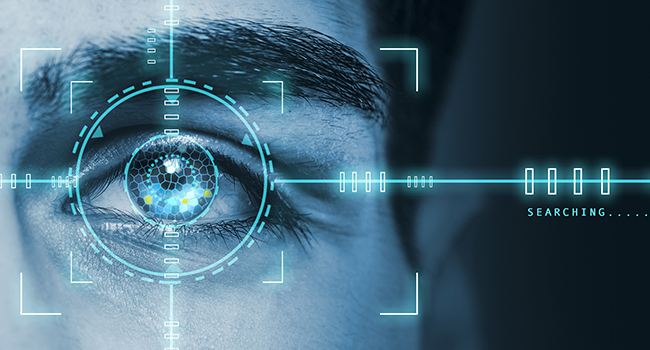
Auburn University Secures Athletic Facilities with Iris Scanners
The iris data is handled entirely by IT staff at Auburn, said Jeff Kohler, a product development director at Princeton Identity, who provides the iris reading technology. Instead of storing the data on the iris readers, it’s encrypted and stored on Auburn’s network “with all of the Auburn security aspects,” Kohler said.
- By Jessica Davis
- January 30, 2019
Student athletes at Auburn University can enter their practice facilities and locker rooms just by looking at the smartphone-sized iris scanner by the door. University officials told EdScoop that the iris scanner technology, which doesn’t require keys or ID cards for entry, is the most secure and convenient solution they’ve used.
The iris reading technology is Auburn’s most recent attempt to secure the entrances to its campus’s athletic facilities. Auburn information technology specialist Rob Stanford said his team plans to continue supporting and upgrading the tech, which hasn’t been used much on college campuses.
“I don’t know of anybody else doing it,” Stanford said. “I could be mistaken there, but I don’t think the iris scanning biometric is the one that’s typically used, although it kind of blows my mind because the price doesn’t seem that bad to me.”
The iris data is handled entirely by IT staff at Auburn, said Jeff Kohler, a product development director at Princeton Identity, who provides the iris reading technology. Instead of storing the data on the iris readers, it’s encrypted and stored on Auburn’s network “with all of the Auburn security aspects,” Kohler said.
Biometric data can’t be easily changed the way a password can. To protect the student eye scan, “templates” used to validate entry, the school stores them on a remote secure serve and protected the same as other personally identifying information like Social Security numbers.
Auburn has secured its athletic facilities and locker rooms with biometric security since 2010. At first, the university moved from a card reader to a biometric palm reader to be more convenient since student athletes who don’t always carry ID when they’re in uniform. The palm-scanning devices presented their own challenges, according to Stanford.
“The issue with the hand scanners is that if you’re an athlete, a lot of times you’re sweating or getting dirty or whatever,” he said. “So you’re putting your hands up there and they contract or expand where [the scanner] wouldn’t be able to read it real well.”
After the palm reader presented difficulties, the school switched to iris readers in 2013. Stanford said the biggest issue is getting athletes to wait long enough for their iris to be scanned; many students are impatient, don’t look straight at the scanner or walk away before the scan is finished.
The university updated their software last summer to Princeton Identity’s latest, which lets athletes and coaches enroll in the security system from a browser on any network-connected device. Stanford said new readers, which scan faster and from a further distance, are coming soon.
About the Author
Jessica Davis is the Associate Content Editor for 1105 Media.